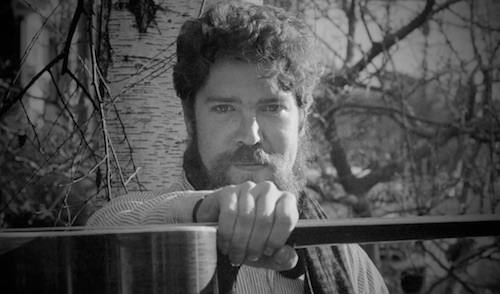
A Short Biography of Robbie Basho
Born in 1940 in Baltimore, Maryland, Daniel Robinson became an orphan in his early childhood and was adopted by a middle-class family. He attended a military high school and then the University of Maryland as a premed student but didn’t graduate. During his time at college he discovered the guitar. Initially taken with flamenco he eventually settled on the steel-string, influenced in part by an acquaintance named John Fahey.
He became interested in Japanese literature, in particular Japanese haiku poet Matsuo Basho. In typical Beatnik fashion, he ”received" his stage name “after spending a night on a mountaintop and ingesting a great deal of peyote,” Fahey wrote in 2000 for the liner notes of Bashovia. The next morning, Basho claimed he was the reincarnation of the Japanese poet.
Immersed in the Washington music scene, Robbie began playing and singing blues and a mixture of foreign protest songs. In 1962 he heard sitarist Ravi Shankar, dropped blues, and began to use open C (CGCGCE) and a lot of more exotic tunings, developed his `Esoteric Doctrine of Color & Mood for 12&6 string guitar´ and talked about “Zen-Buddhist-Cowboysongs”. Like Fahey he decided “to present the acoustic steel-string guitar as a concert instrument”.
He settled in Berkeley, CA, and studied North Indian music with legendary sarod master Ali Akbar Khan. He became a follower of Meher Baba, the silent Indian spiritual teacher. He joined Sufism Reoriented, Meher Baba’s spiritual school in California. Born in 1940 in Baltimore, Maryland, Robbie XXXX became an orphan in his early childhood and was adopted by a middle-class family. He attended a military high school and then the University of Maryland as a premed student but didn’t graduate. During his time at college he discovered the guitar. Initially taken with flamenco he eventually settled on the steel-string, influenced in part by an acquaintance named John Fahey.
He became interested in Japanese literature, in particular Japanese haiku poet Matsuo Basho. In typical Beatnik fashion, he ”received" his stage name “after spending a night on a mountaintop and ingesting a great deal of peyote,” Fahey wrote in 2000 for the liner notes of Bashovia. The next morning, Basho claimed he was the reincarnation of the Japanese poet.
